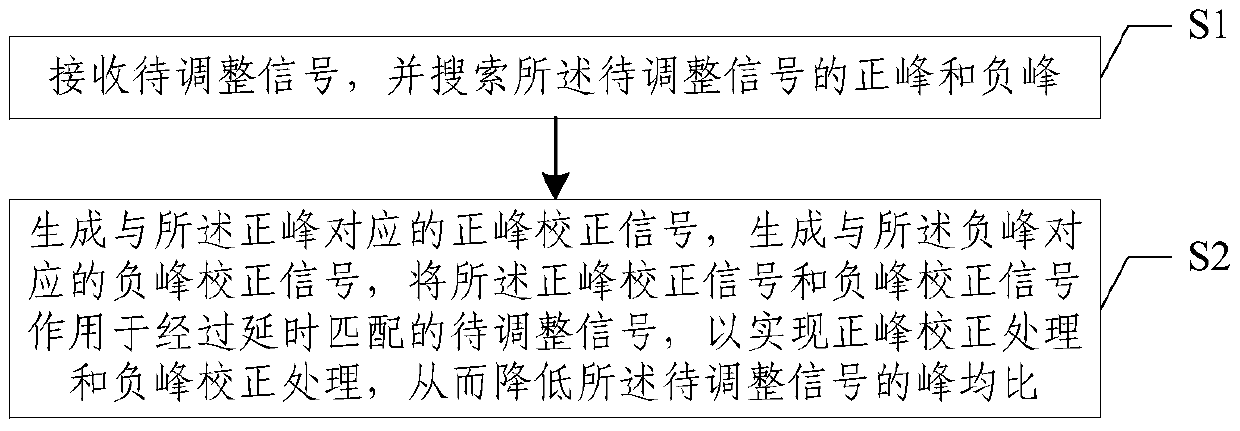A method and system for reducing signal peak-to-average ratio
A signal peak-to-average ratio and peak-to-average ratio technology, applied in multi-frequency code systems and other directions, can solve problems such as signal loss
- Summary
- Abstract
- Description
- Claims
- Application Information
AI Technical Summary
Problems solved by technology
Method used
Image
Examples
Embodiment 1
[0059] The present invention will be described below by taking parallel two-way peak clipping processing and the processing method as pulse cancellation method as an example, but the protection scope of the present invention is not limited. The signal processing flow is as follows Figure 4 shown. The positive peak detector retrieves peak signals that exceed the positive peak threshold, and the negative peak detector retrieves peak signals that exceed the negative peak threshold. The cancellation resource allocator allocates idle cancellation pulse generators for peak signals. The cancellation pulse generator generates corresponding positive peak cancellation pulses and negative peak cancellation pulses. The scaling factor generator generates different scaling factors according to the magnitude of the peak exceeding the threshold, and multiplies it with the cancellation pulse to match the amplitude phase of the cancellation pulse with the peak point. Finally, the positive p...
Embodiment 2
[0067] In the following, the present invention will be described by taking serial bi-directional peak clipping processing and the processing method as the pulse cancellation method as an example, but the protection scope of the present invention is not limited.
[0068] refer to Image 6 , the specific implementation steps are as follows (take positive peak correction first as an example):
[0069] Step1. Set the positive peak threshold and negative peak threshold respectively.
[0070] Step2. Search for the positive peak of the signal.
[0071] Step3. Generate a positive peak correction signal.
[0072] Step 4. Apply the positive peak correction signal to the delay-matched signal, and perform positive peak correction processing on the signal, that is, perform peak clipping processing on the positive peak signal, that is, reduce the power of the positive peak signal.
[0073] Step5. Search for negative peak signals that exceed the set threshold.
[0074] Step6. Apply the n...
PUM
 Login to View More
Login to View More Abstract
Description
Claims
Application Information
 Login to View More
Login to View More - R&D
- Intellectual Property
- Life Sciences
- Materials
- Tech Scout
- Unparalleled Data Quality
- Higher Quality Content
- 60% Fewer Hallucinations
Browse by: Latest US Patents, China's latest patents, Technical Efficacy Thesaurus, Application Domain, Technology Topic, Popular Technical Reports.
© 2025 PatSnap. All rights reserved.Legal|Privacy policy|Modern Slavery Act Transparency Statement|Sitemap|About US| Contact US: help@patsnap.com



